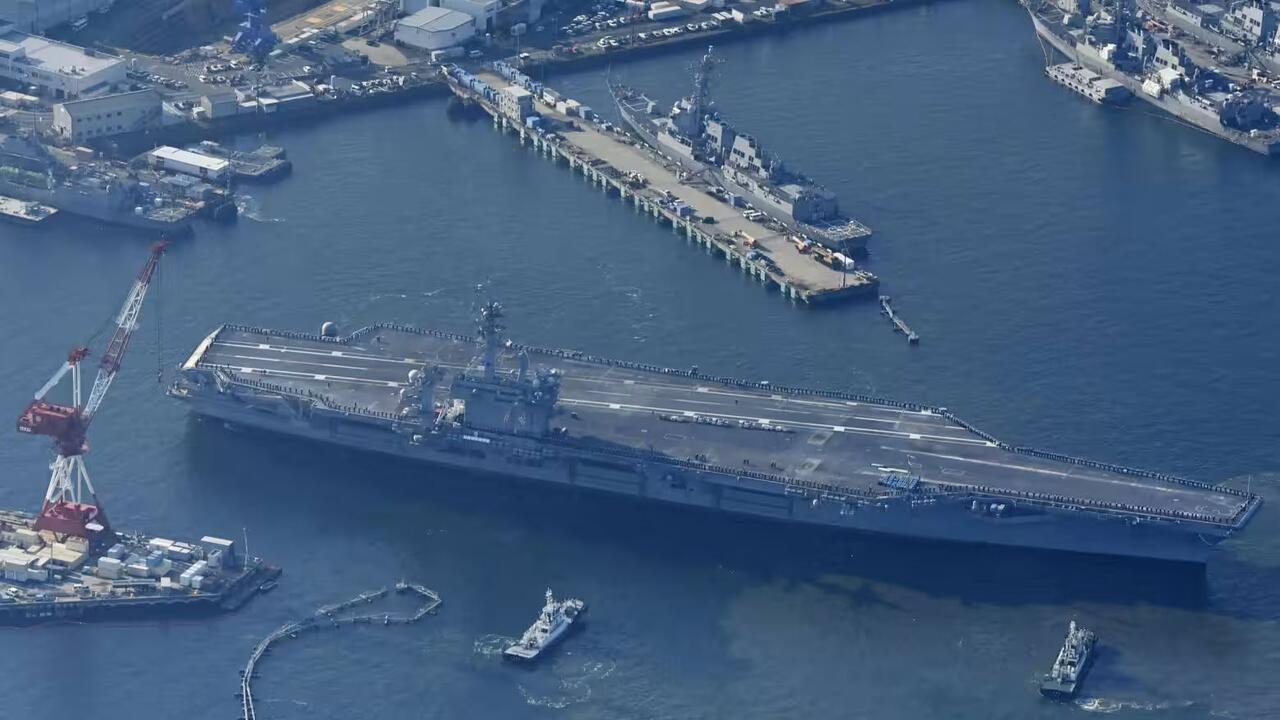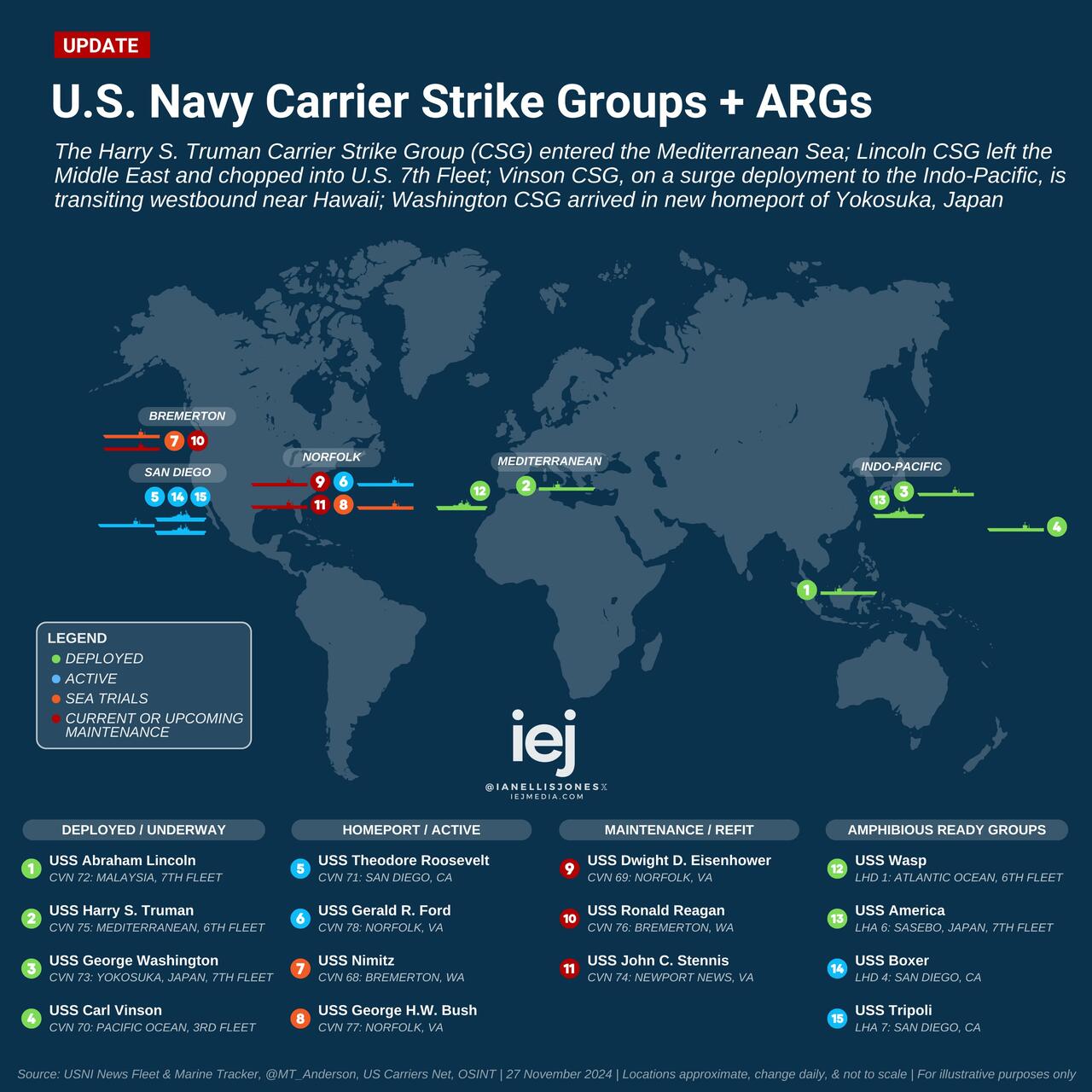3 US Aircraft Carriers To Be In Asia During Trump Inauguration
In a historic convergence, three US aircraft carriers will be in Asia by next week after months of absence amid concerns of Chinese activity in the lead up to the inauguration of President-elect Donald Trump, the Nikkei reported.

USS George Washington, with a crew of 2,702, arrived on Friday in Yokosuka, Japan, home to the US Navy's 7th Fleet, returning to the port for the first time in nine years. The USS Carl Vinson was deployed to the Pacific on Monday. Meanwhile the USS Abraham Lincoln is now in the Indian Ocean, passing through the South China Sea, before heading home to San Diego, California.
"This presence enables rapid response for maritime and joint forces and brings our most capable ships with the greatest amount of striking power and operational capability to bear," Lt. Cmdr. Katie Koenig, a U.S. Pacific Fleet spokesperson, told Nikkei Asia. It also "demonstrates our collective resolve to ensure security and stability in the region," she said.
According to Nikkei, the US had no forward-deployed carrier in Asia since mid-May, when the USS Ronald Reagan left Yokosuka. Other aircraft carriers were sent to the Middle East in response to the rising conflict there after Israel launched missile strikes at Lebanon and Iran-Israel tensions heightened.
Analysts say the increased U.S. military presence in the Pacific is to counter any threat by China in the 50-plus days leading up to Trump's inauguration on Jan. 20. The presence in the Middle East, where multiple carriers were redirected from the Pacific over the summer, will be reduced.
Brent Sadler, a senior research fellow at the Heritage Foundation and a 26-year U.S. Navy veteran, said, "You're entering a period where the Chinese are positioning for a test of our resolve, and so having that stepped up presence is timely."
"China is clearly the number one threat," Sadler said, adding the administration of U.S. President Joe Biden "is in a place where they feel like they can move away" from the Middle East, following the latest round of Iranian missile attacks against Israel and Israel's retaliatory strike.
Jacob Stokes, deputy director of the Indo-Pacific Security Program at Center for a New American Security, said, "China is going to try and test the Trump administration early, probably around Taiwan or the South China Sea, or both." The test, Stokes said, will attempt to determine which of the two sides of Trump Beijing will be dealing with.
"They've seen transactional Trump, that wants to make a deal. Or are they going to get confrontational Trump, which is the way they would characterize his policies from mid to late 2018 on through COVID."
While the U.S. has 11 carriers, most are under maintenance or have just returned from long deployments, leaving only a handful sea ready. As the wars intensified in Ukraine and Gaza, the Pentagon, under Defense Secretary Lloyd Austin, prioritized those regions over the Western Pacific.
Stokes said leaders at the U.S. Indo-Pacific Command "want to reset the baseline and be well situated in terms of military assets and how they're postured come January."
Sadler said the carrier gap in the Western Pacific over the past few months had led to Chinese provocations in the South China Sea and around Taiwan.
"It's not to say that had there been an extra carrier strike group, that wouldn't have happened. But the president would have had more options to signal displeasure with the Chinese in terms that they could understand," he said.
To fill that void, the navy first deployed the San Diego-based USS Theodore Roosevelt to the region, only to quickly redirect the aircraft carrier to help out in the Middle East. Although another San Diego-based carrier, the Abraham Lincoln, was sent to Asia, that too was redirected to the Middle East.
NEVER MISS THE NEWS THAT MATTERS MOST
ZEROHEDGE DIRECTLY TO YOUR INBOX
Receive a daily recap featuring a curated list of must-read stories.




